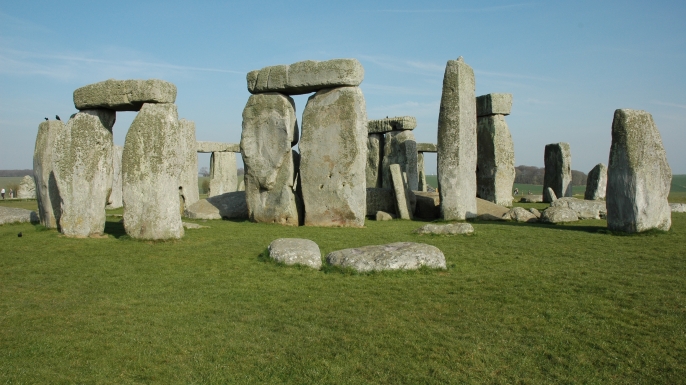So we’ve taken a look at when it was built and who built it, and we’ve even taken a look at how the ancients used the megalithic structure. Yep, that’s right. It’s part three in our Stonehenge series, the final part, and today it’s all about the crazy theories people have come up with for why Stonehenge was built and what it was used for, and we’ll delve in to how much evidence there actually is to support each of these theories, and whether or not any of them might actually be true! So get a cup of coffee and settle in for some of the weirdest theories ever concocted about the most mysterious monument on earth.
A Fertility Symbol
Believe it or not, one theory by Anthony M. Perks poses the idea that the entire site of Stonehenge was meant as a temple to the Mother Goddess. This is, perhaps, one of the most far-fetched theories out there. Supposedly, the layout of Stonehenge represents ideas like family, rebirth, and fertility, and the geometric shape of the monument itself closely resembles female genitalia. While the Mother Goddess was extremely important to Neolithic cultures, it’s important to note that this theory is based almost entirely on speculation. I’ll leave you to decide what you think about this one.
Merlin’s Magic
As we said in earlier installments, 12th-century writer Geoffrey of Monmouth believed that Stonehenge was built by Merlin. This was, in fact, the accepted theory for many years, since Geoffrey’s account of King Arthur and mythical English history was considered reliable well into the Dark Ages. According to Geoffrey of Monmouth, in the mid 5th century hundreds of English nobles were killed by the Saxons and buried right where Stonehenge now stands. The current King of England wanted to create a monument to his brave, fallen subjects, so he ordered his soldiers to get a mythical stone circle from Ireland made of magical African bluestones called the Giants’ Ring. His soldiers failed in their royal quest, so Merlin used his magic to carry the bluestones across the sea and create Stonehenge. This theory, like the rest of Geoffrey’s account, has been since disproved. Stonehenge’s bluestones date to a time before the historical figures that Geoffrey Monmouth based Merlin on ever lived.
Aliens!
Some people go one step further with the far-fetched theories about Stonehenge’s origins and state that aliens must have built it. This theory rests on the assumption that the Ancients did not have the technology to move the massive stones that make up the ancient Neolithic circle. Extraterrestrials with a superior knowledge of engineering must have helped our ancestors build huge monuments like Stonehenge, Easter Island, and the Pyramids. How else did ancient peoples have the technology to build such enormous structures?
The answer to this one is quite simple. Our ancestors used a system of sledges, rollers, and rafts to transport the bluestones from the Preseli Hills. It’s likely the stones were floated up the Welsh coast, then up the River Avon and toward the Salisbury Plain where the monument now stands. In 2000, a group of volunteers attempted to prove that it was possible to move the stone using Neolithic technology by dragging a 3-ton boulder over land from Wales to Stonehenge. While they did fail due to a snapped sling that caused the stone to drop into the sea, it’s possible that, with a enough time, our ancestors had the ability to build Stonehenge all by themselves. Sorry, alien conspiracy theorists.
Whatever you choose to believe about this enigmatic monument, one thing is for certain: nobody knows for sure. Archaeologists and historians have been debating about the famous stone circle’s real builders, origins, and purpose for centuries, and it’s possible that we’ll never really know for sure, no matter how much we dig up, study, and argue. Stonehenge remains one of the most mysterious monuments on the face of the Earth.


